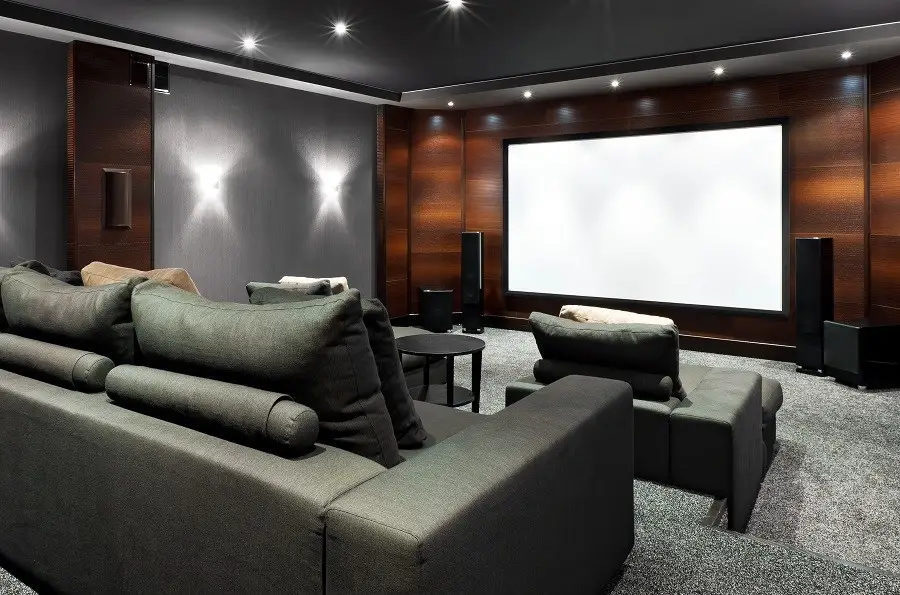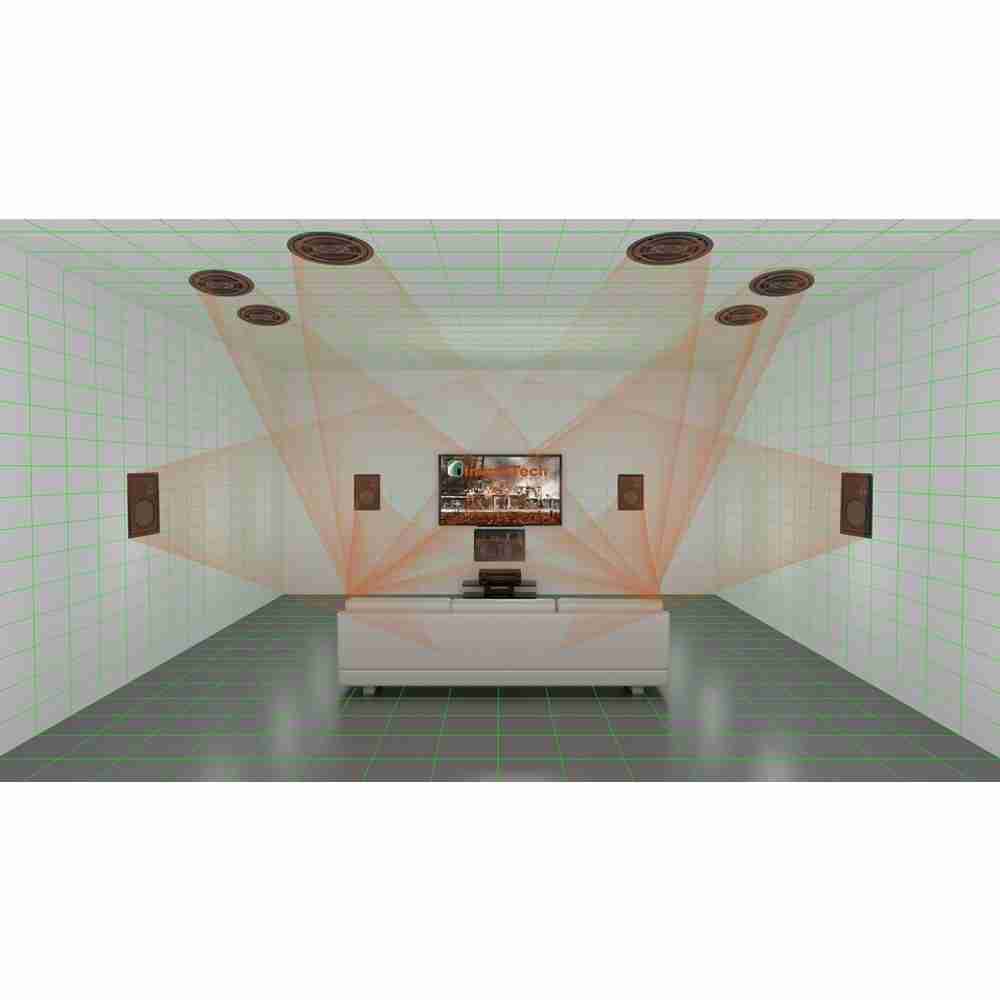Surround Sound Systems
Surround sound systems have become a staple of modern home entertainment. With the rise of streaming services and high-quality audio playback, consumers are looking for immersive audio experiences that can match the picture quality of their displays. While the traditional 5.1 and 7.1 surround sound systems have been around for decades, new technologies like Dolby Atmos and DTS:X have recently emerged, offering even more immersive and three-dimensional audio experiences. In this article, we will explore the different types of surround sound systems available, how they work, and what sets them apart from each other.

5.1 Surround Sound
5.1 surround sound is a type of audio format that consists of six audio channels: five primary channels and one low-frequency effects channel. The “5” in 5.1 refers to the five primary channels, while the “1” refers to the low-frequency effects channel.

The five primary channels consist of:
- Center channel: This channel is dedicated to dialogue and other on-screen sounds that are intended to come from the center of the screen.
- Front left and right channels: These channels are responsible for creating stereo sound and are typically used for music and sound effects.
- Rear left and right channels: These channels provide ambient sound effects, such as environmental noises or crowd sounds.
The low-frequency effects (LFE) channel, also known as the subwoofer channel, is dedicated to reproducing low-frequency sounds, such as explosions and deep bass notes.
When audio is mixed in 5.1 surround sound, each sound element is assigned to one of these six channels. The end result is a more immersive audio experience that can create the illusion of sounds coming from all around the listener. This technology is commonly used in home theater systems, movie theaters, and video games.
7.1 Surround Sound
7.1 surround sound is a type of audio format that consists of eight audio channels: seven primary channels and one low-frequency effects channels. The “7” in 7.1 refers to the seven primary channels, while the “1” refers to the two low-frequency effects channels.
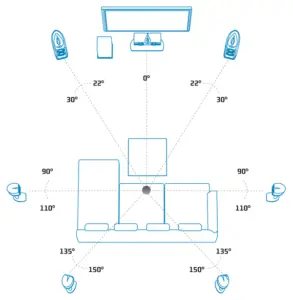
The seven primary channels consist of:
- Center channel: This channel is dedicated to dialogue and other on-screen sounds that are intended to come from the center of the screen.
- Front left and right channels: These channels are responsible for creating stereo sound and are typically used for music and sound effects.
- Surround left and right channels: These channels provide ambient sound effects, such as environmental noises or crowd sounds.
- Back left and right channels: These channels are used to create a more immersive sound experience by providing sound from behind the listener.
The low-frequency effects (LFE) channel, also known as the subwoofer channel, is dedicated to reproducing low-frequency sounds, such as explosions and deep bass notes.
When audio is mixed in 7.1 surround sound, each sound element is assigned to one of these eight channels. The end result is a more immersive audio experience that can create the illusion of sounds coming from all around the listener, including from behind. This technology is commonly used in high-end home theater systems, movie theaters, and professional audio production.
Dolby Atmos
Dolby Atmos is a type of surround sound technology that is designed to create a more immersive audio experience by adding height and depth to the traditional surround sound setup. It was developed by Dolby Laboratories and was first introduced in 2012.
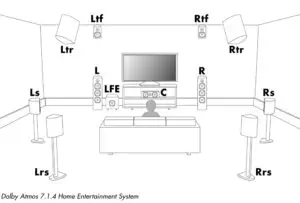
Unlike traditional surround sound, which is based on a fixed number of audio channels, Dolby Atmos is based on an object-based audio system. This means that individual sounds, or “objects,” are assigned a specific location in 3D space and can be moved or placed anywhere in the room, not just within the limits of the traditional speaker setup.
Dolby Atmos works by adding additional speakers to a traditional surround sound setup. These speakers can be placed above or below the listener, or even in the ceiling, allowing for sounds to be placed in a specific location within the three-dimensional space of the room. In addition to the traditional 5.1 or 7.1 surround sound channels, Dolby Atmos systems typically include several additional speakers, including “height” speakers that are placed above the listener.
Dolby Atmos is used in a variety of applications, including movie theaters, home theaters, and mobile devices. It is also used in the production and mixing of movies, TV shows, and music, allowing creators to mix sound in a more immersive and realistic way.
Overall, Dolby Atmos is designed to create a more immersive and realistic audio experience, allowing listeners to feel as if they are truly a part of the sound environment.
DTS:X
DTS:X is a type of surround sound technology that is similar to Dolby Atmos. It was developed by DTS (Digital Theater Systems) and was first introduced in 2015.
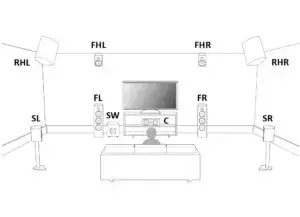
Like Dolby Atmos, DTS:X is based on an object-based audio system that allows sounds to be placed in specific locations in a three-dimensional space. DTS:X is designed to be compatible with a wide range of speaker configurations, from a basic 5.1 setup to more complex setups with additional speakers.
One of the key features of DTS:X is its ability to adjust the audio to the specific acoustics of the room it is being played in. This is done using a process called “spatial remapping,” which analyzes the room’s acoustics and adjusts the audio to optimize the listening experience.
DTS:X also supports immersive audio technologies like height speakers, allowing sounds to be placed above and below the listener. It also includes a feature called “Dialog Control,” which allows viewers to adjust the volume of dialogue in movies and TV shows to make it easier to hear.
DTS:X is used in a variety of applications, including movie theaters, home theaters, and mobile devices. It is also used in the production and mixing of movies, TV shows, and music.
Overall, DTS:X is designed to create a more immersive and realistic audio experience, allowing sounds to be placed in specific locations in a three-dimensional space and adjusting to the specific acoustics of the room it is being played in.
Conclusion
In conclusion, there are several types of surround sound systems available, each with its own unique features and benefits. Traditional 5.1 and 7.1 surround sound systems are still popular and offer excellent sound quality, while new technologies like Dolby Atmos and DTS:X provide even more immersive and realistic audio experiences. These technologies are particularly useful for movies and TV shows that are specifically mixed for them, but they can also enhance music playback and video game sound effects.
When choosing a surround sound system, it’s important to consider your room size, speaker placement, and budget. Traditional systems are typically more affordable, but they require careful placement of speakers to achieve optimal sound quality. More advanced systems like Dolby Atmos and DTS:X can be more expensive and require additional speakers, but they offer a more immersive and realistic sound experience. Ultimately, the best surround sound system for you will depend on your personal preferences and priorities, but with the wide variety of options available, there is sure to be a system that meets your needs.
